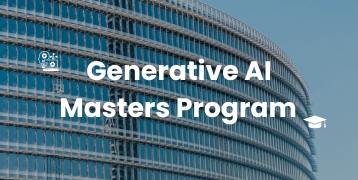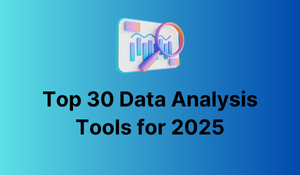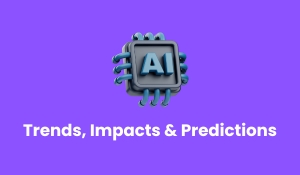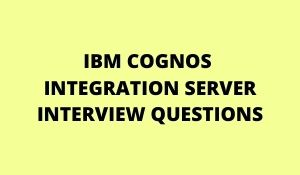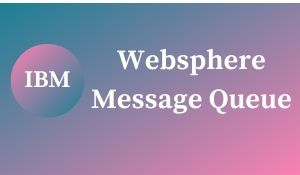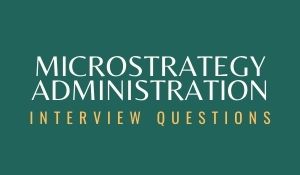
1. What is Microstrategy?
Microstrategy is an enterprise business intelligence application software vendor. It supports scorecards, interactive dashboards, ad hoc queries, highly formatted reports, etc.
2. How Many Types The Microstrategy License Can Be Bought?
Two types: named users and CPU licenses.
3. What Types Of Testing Can Be Carried Out Over The Microstrategy Reports?
Many aspects of the report can be put into testing depending on the type of report.
- Naming convention tests.
- Total calculations test.
- SQL query validations.
- Attribute and metric positions in the report.
- Drilling options Tests.
- Prompts related verifications.
- Security filter tests.
- Formatting/export functionality tests.
- Threshold testing
4. Define metadata in MicroStrategy?
MicroStrategy consists of multiple object definitions, which are stored using a database repository, known as metadata. It could be hosted on most of the databases. Metadata repository also consists of information about data warehouses. All the required information is captured in a format within a relational database. All report making and data analysis is done by mapping MicroStrategy objects, achieved through metadata. Similarly, the report creation process uses various objects, representing data as report building blocks, which are eventually created and stored in a metadata repository. Sharing of objects across MicroStrategy applications is enabled by metadata, by providing a central repository for object definitions.
5. Is it possible for the users to define the compound metric with the other metric objects in the Microstrategy environment?
Yes, it is possible and generally, this is done using the various arithmetic operations which are present in default in the Microstrategy. The users can freely choose the combination or a group of any two operations for performing this task reliably.
6. What exactly do you know about the Microstrategy Logical View?
It is defined as a table that the users can simply create by writing the SQL directly rather than compiling the code first with the warehouse. It simply enables the users to get the information displayed on the screen regarding all the going on operations in a very reliable and simple manner. Also, there are instructions to take the appropriate actions on the screen.
7. What do you know about the Narrowcast server in Microstrategy?
In Business Intelligence, many times users have to get the information on their mail, or wireless devices. This task is done through the Narrowcast server. It is a software product that is used for this purpose and the users are free to select the type of information they need and exactly when. This software also enables them to keep a close eye on important tasks and remind them about them.

8. Why dataset is to be preferred over the file set in Microstrategy according to you?
The use of file sets is limited to that of tables while on the other side, the use of the dataset is beyond the same. They have a lot of important parameters of BI in them, metrics, as well as attributes of a report.
9. What are the benefits of Microstrategy you are familiar with?
1. Microstrategy is based on the single meta-data repository
2. It is possible for the users to use it as a web-based or a desktop tool
3. The latest information on the data including the addition of new objects, modifications can automatically be derived from the warehouse directly
4. When it comes to repowering, Microstrategy is a fast approach that can be trusted for the long run.
10. How can you say that the Microstrategy is secure to work on?
There are different options available when it comes to security. The good thing is users are free to customize them as per their needs without losing their grip on anything. Also, it enables them to keep the data confidential and private without doing much. Security can be assured without investing money and time and assuring minimum maintenance. Microstrategy can easily be synchronized with the Novell directory.
| Learn more information from the GoLogica “MicroStrategy Administration Training“ |
11. Why does the Implicit Attribute doesn’t physically appear in the database in Microstrategy?
Simply because it is not created in the database, instead, it is created at the application level.
12. Can you name any 5 tests that can be conducted on the Microstrategy reports?
The common ones are listed below:
1. Security filter Test
2. Drilling Option Test
3. SQL Query Validation
4. Naming Convention Tests
5. Threshold Test
13. Mention what specific features and functionality you get with OLAP services?
With OLAP services users can create unique report views by removing or adding attributes and metrics contained within the intelligent cube. Without submitting a new request to the data warehouse, the new calculation is performed.
14. List out the end user products that deliver OLAP Services?
End user product that delivers OLAP services include
- Microstrategy Web
- Microstrategy Desktop
- Microstrategy Office
15. What are the methods to implement Intelligent cube technology in MicroStrategy?
Intelligent cubes allow a user to access OLAP service features on reports, a shared set of data can be shared among multiple reports. Intelligent cubes are multi-dimensional cubes on a BI platform, having two unique methods to implement intelligent cube technology:
Personal intelligent cubes: It is an intelligent cube functionality, in which users can begin with report creation in a usual manner, and afterward analyze the reports with OLAP service features like derived metrics, view filters, and dynamic aggregation. All features are processed with an in-memory copy of data, called a personal intelligent cube. Thus, rather than being processed in a data warehouse, processing occurs with an in-memory copy.
Intelligent cubes: A shared intelligent cube having a set of data can be shared as a single in-memory copy, among reports generated by different users. Sets of data are being returned from data warehouses and then saved directly into intelligence Server memory. All reports having access to intelligent cubes can utilize OLAP services features for reporting and analysis purposes.
16. Explain how intelligent cubes are different from ordinary cubes?
Intelligent cubes are generated automatically when a new report is run against the data warehouse. Users don’t have to mention the cube to which they want to connect. Within the Microstrategy platform, the logic to match user requests with the proper intelligent cube is automatically handled. Subsequently, the requests made by other users can seamlessly hit this new intelligent cube.
17. Explain the process of creating intelligent cubes in MicroStrategy?
A public folder or a specific user folder can be selected for the creation of intelligent cubes in MicroStrategy. After a report creation process is achieved, one can point the report to a cube further right click on a folder and then select cube-option to create a new cube. Once cube creation is done, required report objects need to be selected and thus save the cube. Then, a cube is stored and run to check, anyone creates multiple reports out of the cube now. A developer can also add new attributes and metrics with the cube and the same would be available when we run the report any other time.
18. What are the features which the Intelligence cube doesn’t support generally?
This is a trick question and is generally asked by those who have experience in Microstrategy tools. You can mention the two features which the Intelligent Cube doesn’t support and they are OLAP Service and the second is Prompts.
19. List out different algorithms being used in MicroStrategy?
Different sets of algorithms are vastly supported in MicroStrategy, some of them are:
- Regression algorithm
- Tree algorithms
- Clustering algorithms
- Neural network algorithms.
20. How the users can consider the SQL to be utilized as a specific table, In Microstrategy?
The alias name of the concerned table can directly be considered for this task by the users. The fact is this is one of the easiest methods available for this. The logical size of the can simply be modified using the default tables.
21. With Microstrategy, is it possible for the users to update a record in the database?
Yes, this is possible and the users are free to get the results in the desired manner with this. The ODBC test tool present in the Microstrategy simply lets you keep up the pace with the same. The table specifications can also be modified up to the desired extent through the same tool.
22. Suppose you need to generate the BI reports on the Microstrategy, how can this task be done easily?
For this, the very first step that the users have to perform is simply connecting the task with the database and post which the metadata is to be created. The next step is to create the database and then schedule the queries. After this, the reports can be created easily.
23. What is the difference between 2-tier, 3-tier, and 4-tier architecture in MicroStrategy?
In 2 tier architectures, MicroStrategy desktop interacts with data warehouse and metadata in the form of a query, without the usage of any intelligent server. Thus, a normal interaction takes place between the desktop and metadata. 3 tier architectures, on the other hand, consist of an intelligent server between the desktop and data warehouse or metadata. 4-tier architectures, add an extra component in 3-tier architectures in the form of MicroStrategy Web.
24. What is the scope of testing in the Microstrategy and in which domain they are generally conducted?
It is considered for finding the bugs and the errors in the tasks performed by the users like in all the testing procedures. In Microstrategy, this task is generally carried out in the reports to find the information that is not relevant to the output and is present for another purpose.
25. What is an implicit attribute in MicroStrategy?
An attribute having its expression is called an implicit attribute. It does not exist physically in the database but exists virtually. Hence can also be termed as a virtual attribute. It is created at the application level.
26. How to display the results in front of you to understand them in a better way?
In Microstrategy, there is an option/feature i.e. Listeners which enables users to get the outcomes displayed in the form of graphs, tables, and log files, as well as in simple text. Also, a lot of filters can be applied directly to the same. This makes users keep up the pace simply with this approach.
27. How Can You Impose Security Measures Into The Microstrategy?
Column level security is established by imposing user specific access permissions in the database and having user specific connections. Entire sets of objects can be secured by imposing folder and object-level security. Row level security is imposed by having user specific security filters for various records.
28. What Does Microstrategy Desktop Allow Users To Do?
Using Microstrategy Desktop, users can easily access and share critical corporate information they need to make cost-cutting decisions and improve business processes. The information found in databases can also be used to help increase revenue and boost profits. Users can access this database and SAP data without having to learn technical database query (SQL) or multi-dimensional expression (MDX) syntax.
29. What Can Users Do With The Information They Access Using Microstrategy Desktop?
Users can analyze the information using standard aggregations and more sophisticated functions such as average, summation, percentage contribution, standard deviation and net present value. Investigative reporting, using pivoting, sorting, slicing, and drilling to more detail, can be performed with simple mouse clicks. Users can also format reports to their specifications and view the data as intuitive charts and graphs to identify trends and anomalies quickly
30. Are The Reports Created Using Microstrategy Desktop Available To Other Products Such As Microstrategy Web?
Yes. Reports created using Microstrategy Desktop are immediately available to other Microstrategy products because of our centralized metadata architecture
31. Can Microstrategy Desktop Access Sap Data?
Yes. With the release of Microstrategy 8, Microstrategy Desktop incorporates a new dynamic data access engine designed to access multi-dimensional databases (MDDBs or OLAP Cube Databases) such as those from SAP Business Information Warehouse (BW) databases
32. Does Microstrategy Intelligence Server Run On 32-bit And 64-bit Systems?
Yes. MicroStrategy Intelligence Server provides an industry first — a common code base architecture for all supported 32- and 64-bit operating systems. This single code base ensures that the latest functionality is always available on all these operating systems at the same time.
33. Can Users Access Microstrategy Intelligence Server Using Ldap, Data Source, Or Windows Authentication?
Yes. MicroStrategy Intelligence Server integrates with LDAP and Windows security systems. Users will only need to log in with their LDAP or Windows login to access MicroStrategy projects through the Intelligence Server
34. Can My Administrator Easily Maintain And Manage Microstrategy Intelligence Server?
Yes. MicroStrategy Intelligence Server’s centralized architecture provides one console from which all maintenance and administration can be performed. In addition, a standardized data dictionary for enterprise reporting and OLAP analysis is stored in a metadata repository and enables reusable reporting objects and business rules.

35. Does Microstrategy have Windows- Or Unix-based Administration Tools?
MicroStrategy has both Windows- and UNIX-based administration tools. UNIX and Linux administration is provided through a Java-based Control Center. Both the Windows administration tools and the Java-based Control Center provide local or remote administration and monitoring of all Intelligence Servers in the BI implementations.
36. What Are The Supported Languages For A Microstrategy Intelligence Server?
MicroStrategy Intelligence Server is available in English (US and UK), French, German, Spanish, Italian, Portuguese (Brazilian), Swedish, Chinese (Simplified and Traditional), Korean and Japanese.
37. To Save Time, Can Many Reports Be Run At The Same Time And The User Level?
Yes. MicroStrategy Intelligence Server can execute multiple reports simultaneously. When report results are ready they are saved in a personal History folder
38. Does Microstrategy Intelligence Server Support Xml?
Yes. MicroStrategy Intelligence Server uses XML to transfer data. This enables organizations to present information from the Intelligence Server to end users through multiple mediums including the Web, email, and web services.
39. How Can I Create Statements, Report Books, Or Dashboard Books In Microstrategy?
Users can maintain separate documents and combine them into a single, finalized document (report book, statement, or dashboard book). The individual documents can be maintained by different users and they can have the following unique qualities:
• Page groupings
• Layout
• Page Orientation
• Vertical or horizontal repeating sections
• Conditional formatting
• Pagination
• Datasets
Enabling users to group multiple documents into one makes it significantly easier to develop and maintain individual pieces of the unified document
40. How Do Current Microstrategy Narrowcast Server Customers Use Intelligent Alerting?
Customers use Microstrategy Narrowcast Server to deliver inventory alerts, business performance alerts, supply chain alerts, customer activity alerts, stock and personal finance alerts, last-minute travel alerts, data load alerts, customer account activity alerts, and fraud alerts. New uses are constantly being developed for intelligent alerting.
Related Articles:
🎯 A Beginners Guide to Microsoft PowerApps
🎯 A BRIEF HISTORY OF SSIS EVOLUTION
🎯 Advanced Concepts on MS Build
🎯 Alteryx Designer vs. Microsoft Power BI – 2023 Comparison
🎯 Automating processes with Microsoft Power Automate
🎯 Career Opportunities on Power BI
🎯 Latest Microsoft Azure Fabric Interview Questions – 2021
🎯 Microsoft Azure Features & Architecture

